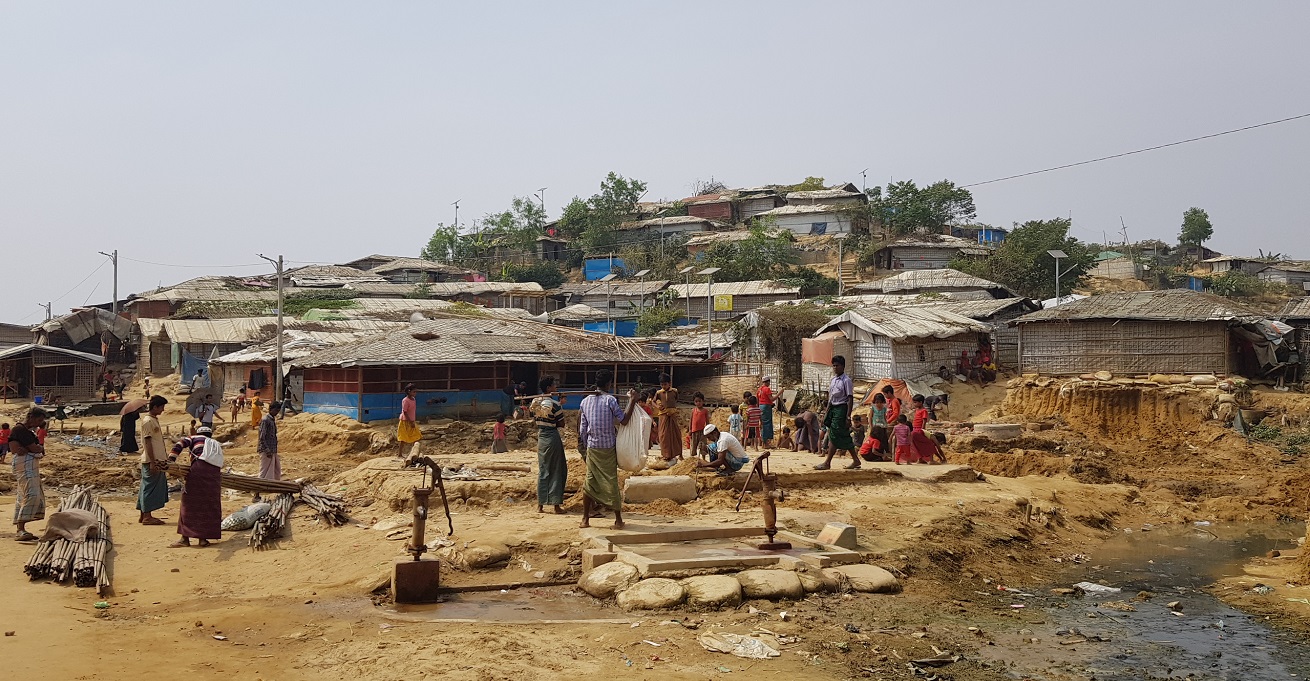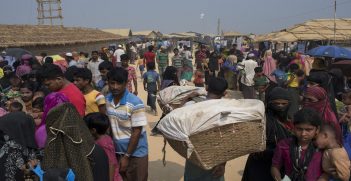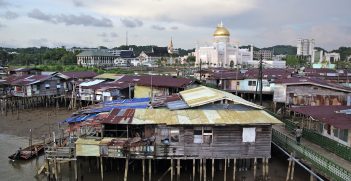Editors' Selection 2020: Three Years Too Long: The Refugee Crisis in Bangladesh

25 August 2020 marks the third year of displacement for the people of Rakhine State, who continue to seek refuge in Bangladesh. The COVID-19 pandemic is exacerbating the tough living conditions in the camps in Cox’s Bazar and worsening any prospect of returning to Myanmar.
This is an article published earlier this year and selected by our committee of commissioning editors as one of the best of 2020.
My forefather had not seen peace in Arakan. As well my parents.
Now it seems I will die without taste of it.
All I want is peace and equality in Myanmar for all races.
I have been hearing since birth that all human beings born equal and free. But where is this?
– Elderly man interviewed in the camps by community activist, Ro Yassin Abdumonab, August 2020
Three years of a humanitarian crisis is three years too long, but not just because of the prolonged human suffering. It suggests a worrying fatigue among donors and the broader international community who are now preoccupied with the COVID-19 pandemic. While the restrictions brought on by the pandemic have accelerated a shift to locally led relief, they are also exposing the limits of how much and how quickly the humanitarian system can adapt.
On 25 August, more than 860,000 people now living in refugee camps in Cox’s Bazar, Bangladesh, will mark the third year of their displacement from Rakhine State in Myanmar. They remain fully dependent on humanitarian aid, with vulnerabilities and trauma compounded by prolonged hardship. Movement restrictions and pandemic containment measures have only heightened this dependence, while at the same time reducing accessibility to and availability of essential services. The conflict in Rakhine State meanwhile continues, and the likelihood of the displaced population returning home is as distant as ever. For Australia and other countries in the region, it is vital to recognise the complexity of this long-standing crisis and support efforts to find a solution now.
The settlements in Cox’s Bazar constitute the world’s biggest refugee camp and the most densely populated, with more than 40,000 people per square kilometre. Overcrowding and unhygienic conditions mean that physical distancing and regular handwashing are privileges beyond reach. Multi-generational households of up to ten people are common. There is little capacity to treat serious health risks. Aside from COVID-19, people living in the camps have also faced diphtheria, measles, and cholera outbreaks, or have existing health conditions such as acute respiratory infection, which transmits much like COVID-19.
Compounding these issues are cyclones, the current monsoon season, and their devastating impact. In just one day this year, more than 1585 camp residents were displaced by wind and landslides. Last year, hundreds of families faced the risk of landslides and flooding, damaged water points, and health risks from waterborne diseases.
Local Bangladeshi communities in surrounding rural areas are facing similar challenges, alongside congestion, increased cost of living, scarcity of resources, and a rise in criminal activities, much of which they attribute to the presence of the displaced people from Rakhine. Unsurprisingly, social tensions between the two communities have been rising.
The Bangladeshi government’s national preparedness and response plan issued within weeks of the first COVID-19 case only briefly referenced the camps in Cox’s Bazar. Most of the country – 165 million people occupying a space equivalent to three-quarters of the size of the state of Victoria – has been under lockdown since mid-March, with the military playing a significant role in enforcing restrictions. The government is maintaining authority, but it is being severely tested by the inadequacies of its public health system and the devastating economic disruption.
Foreign aid appeals are struggling to meet funding targets, which has escalated the pressure on Bangladesh to take on more of the financial responsibility associated with supporting the response in Cox’s Bazar. Humanitarian response is limited to critical services by government decree, and the number of aid workers reaching the camps has reduced by 80 percent. While the international aid presence was already being reduced, COVID-19 restrictions have forced a significant scale-down of activities. Many agencies have relocated expatriates to Dhaka or pulled them out of Bangladesh to work remotely.
Since the beginning of the COVID-19 crisis, humanitarian organisations in Cox’s Bazar have relied on national staff and local volunteers, including those from community living in the camps, to provide vital services such as health promotion and food and hygiene kit distributions. Serious gaps remain. Given the limited access to the camps, protection of the most vulnerable members of the community has been inadequate, leading to increased risks of domestic violence, child protection issues, early and forced marriages, and human trafficking. Within the last six months, conditions in the camps, as well as a reported escalation of violence in Rakhine State, have prompted a surge in irregular boat movements, claiming many lives and leaving several vessels adrift at sea.
With no chance of surge deployments or rotations of external experts, agencies have had to increase their volunteer programming while local community members step up as leaders in the response. Localisation of humanitarian aid in Cox’s Bazar has long been in sight, but the extraordinary reliance on local nongovernmental organistions and civil society, including those living in the camps, made necessary by COVID-19 has come earlier than expected.
To an extent, the current senario has pre-empted a soon-to-be finalised “localisation roadmap” for humanitarian response in Cox’s Bazar. Reconciling the roadmap with the context of COVID-19, however, will be a major challenge, not least because the bulk of humanitarian funding for COVID-19 continues to be channelled to international agencies.
The situation in Cox’s Bazar is part of a complex humanitarian crisis, with no solution on the horizon. In spite of enormous challenges, both the displaced and local Bangladeshi communities have played a critical role in the humanitarian response. At no time has this been more evident than during the COVID-19 pandemic.
On this third-year anniversary, it’s time not just to recognise their fortitude and resilience, but to anticipate the longer-term needs of the people from Rakhine while renewing efforts towards their safe and dignified return home.
Due to concerns regarding safety, security, and operational access to affected communities, the International Red Cross and Red Crescent uses the term “people from Rakhine” to denote a community who prominently self-identify as “Rohingya.”
Anna Bowen works in the International Program at Australian Red Cross. She spent six months in Cox’s Bazar on deployment with the International Federation of Red Cross and Red Crescent Societies (IFRC), working with the Bangladesh Red Crescent Society and other Movement partners on the humanitarian response.
This article is published under a Creative Commons Licence and may be republished with attribution.





